Even though winter conditions in Australia are nowhere near as tough as some places in the northern hemisphere, the technology exists to utterly eliminate poor-traction in any weather. You can either add it (affordably!) to your existing boots or shoes or buy a dedicated pair and it will help whether you’re just walking to work or want to keep training no matter the weather.
Aggressively lugged boots and trail runners work great in everything from mud to soft snow. But, as anyone walking down a New York street can tell you, rubber doesn’t do squat once that snow is packed down or if you encounter an icy section.
Adding traction for tricky winter conditions isn’t just a matter of convenience. You can achieve traumatic brain injury in a simple, walking speed fall and, even though that’s rare, falling while crossing a street is embarrassing, will get your clothes dirty and can result in a myriad of more minor injuries.
And, if we’re talking about active pursuits in the outdoors, it’s critical for performance to retain your normal gait over slippery surface no matter if you’re running, hiking or even walking the dog. Not a bad advantage when you consider it can be achieved for as little as $US15.
Add-On Traction
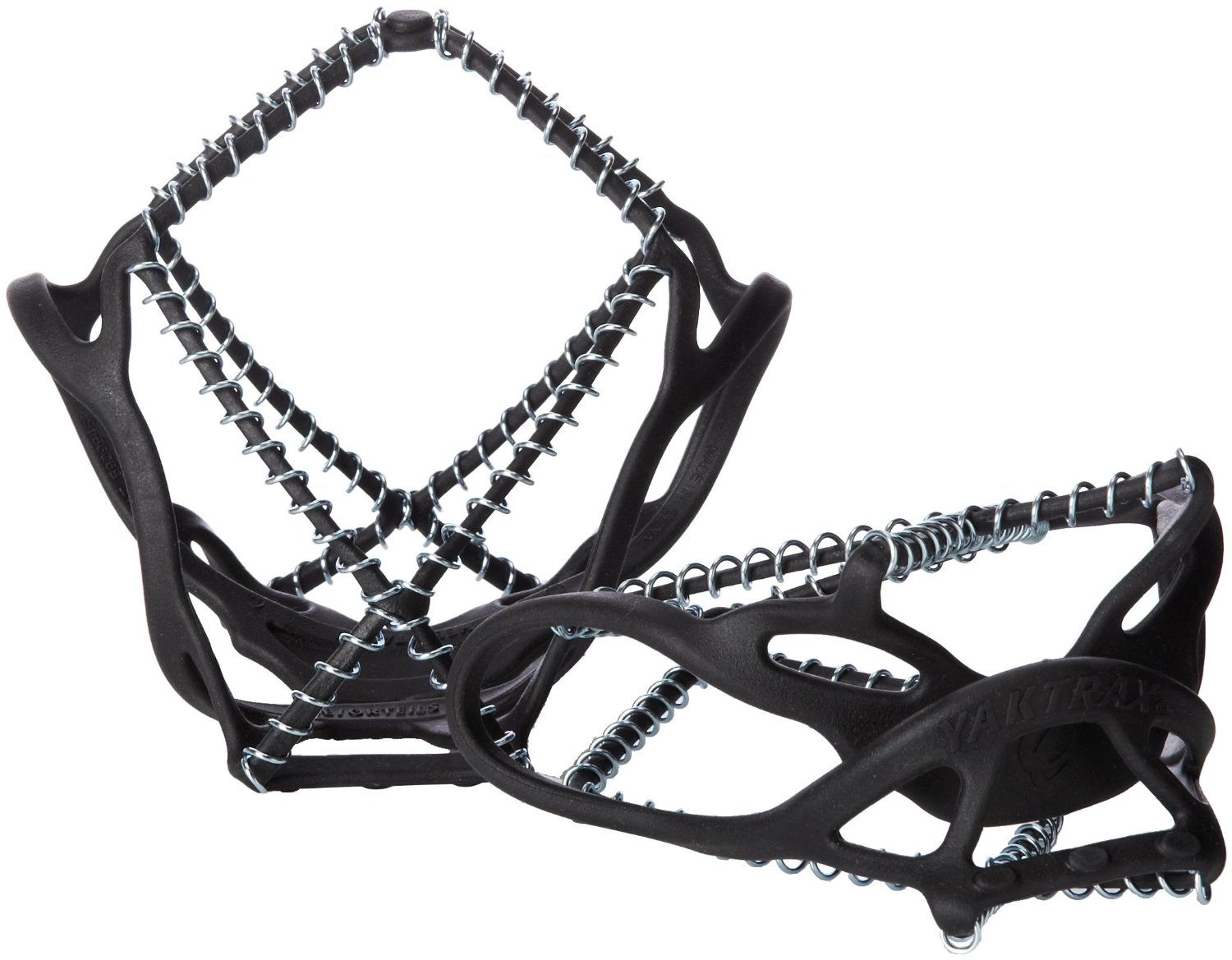
Coils and Cleats: The cheapest and most common traction device are YakTrax (pictured above) and similar. They can be attached to virtually any boot or shoe and are composed to stretchy rubber cables wrapped in metal wire. Cleats are more substantial devices, lifting the shoe on top of rubber platforms wearing metal studs.
Advantages: Cheap, functional and universal. One set will likely fit all your footwear and they also pack down small enough to fit into a pocket or purse.
Disadvantages: They’re bulky and loose under your foot, shifting as you walk anytime you encounter a firm surface. So, they’re mostly applicable to simple walking. Not durable, you’ll be replacing them at least every winter. And, they will crack and split in very, very cold temperatures.
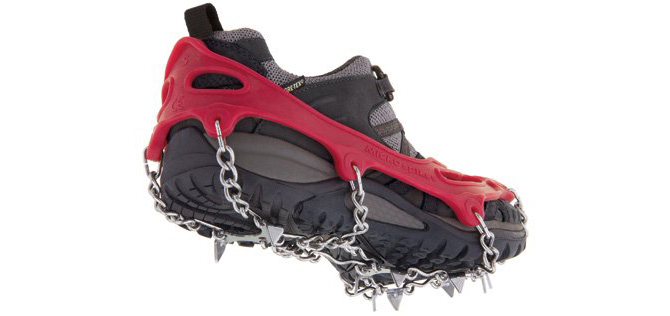
Spikes: Popularised by Kahtoola Microspikes (pictured above), strap-on spikes give you a much more secure footing on firm surfaces like ice, both by shifting around less under your feet and by really digging in aggressively.
Advantages: The small spikes provide excellent winter traction no matter the surface and can be added to virtually any item of footwear. They work especially well on trail runners, allowing you to move naturally over snow-packed terrain. The rubber used in Kahtoola’s products will remain pliable down to -60C
Disadvantages: You’ll need to take them off any time you encounter a snow or ice-free surface like concrete or any time you want to go inside. They don’t provide quite the stability or connection of integrated spikes and some designs are positively clunky and awkward to walk on.
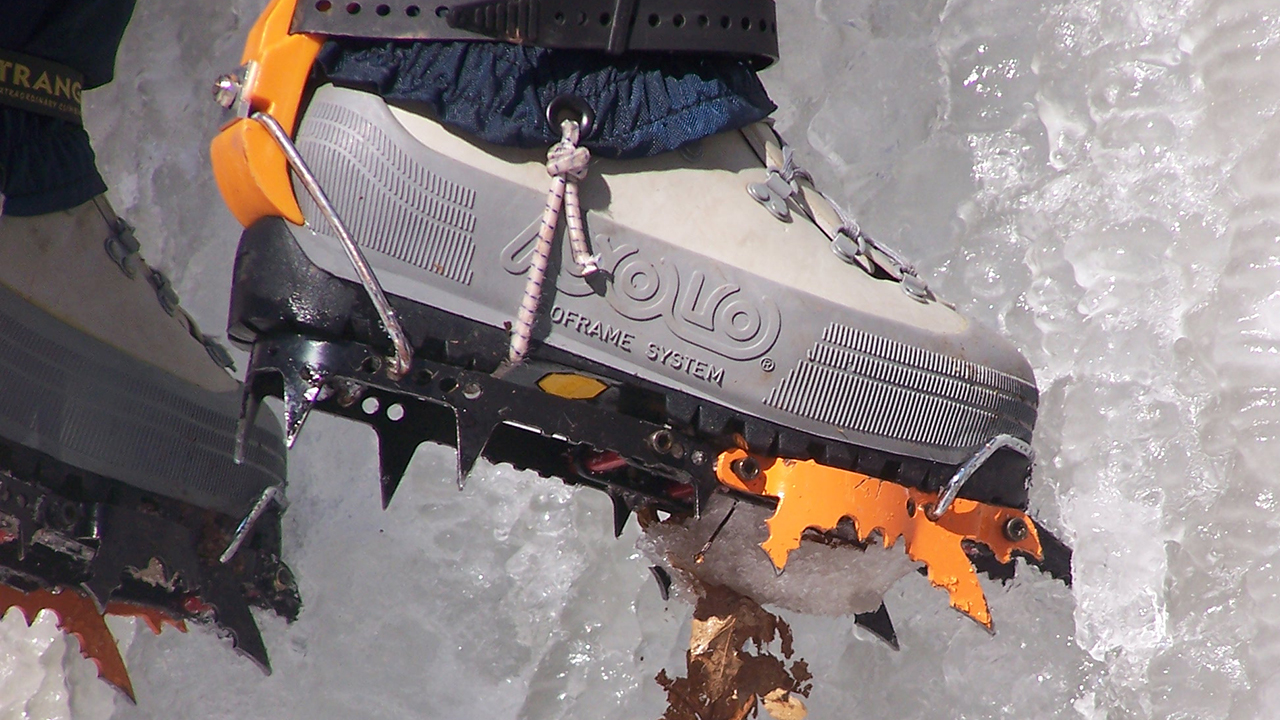
Crampons: A hardcore choice for serious winter activities like climbing or mountaineering, these give you the absolute best traction possible with spikes measuring one inch or so.
Advantages: If you need crampons, then you need crampons. They’re a specific tool for a specific job: mountaineering or climbing and are robust and functional as a result.
Disadvantages: Boots need to be specifically designed for crampon compatibility and their weigh, aggression and price rule them out for casual use.
Integrated Traction
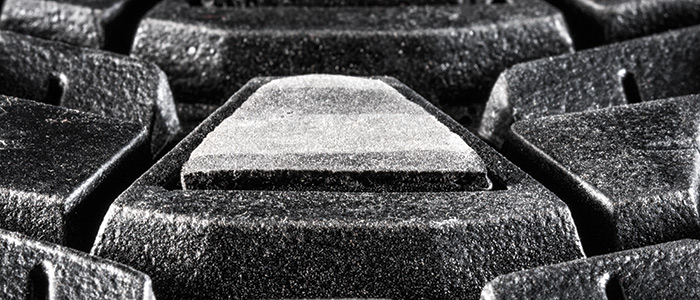
Hanwag IceGrip: By embedding fine glass particles into specific lugs on the rubber sole of its winter boots (grey lug above), Hanwag is able to massively increase their traction on ice.
Advantages: The pair of Abisko snow boots we’re testing sacrifices no dry traction or feel, but just sticks to slick, icy surfaces as if you’ve attached sandpaper to the soles. The independent SATRA research program measured an increase in grip of seven times on hard, slick ice over conventional rubber soles. And you can wear these straight from an icy street into an office building without making a racket, damaging the floors or skidding all over the place on metal studs. They’re probably the easiest way for most people way to gain extra traction in dangerous winter conditions as a result.
Disadvantages: IceGrip only aids you on one, very specific surface: slick ice. Hanwag itself says, “The IceGrip sole is no substitute for ice spikes.” If you’re simply looking for a conventional snow boot that also grips ice, then these will work for you, but there’s better technology available that offers both more grip and more versatility.
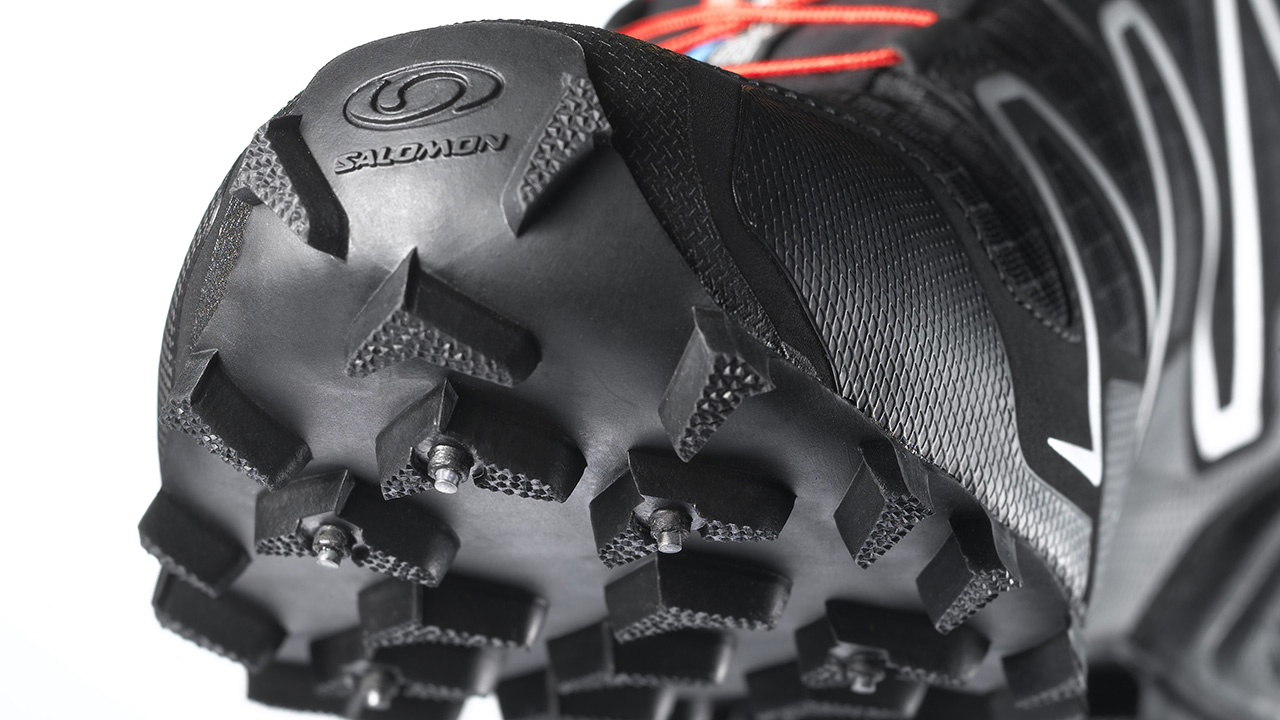
Studded Running Shoes: Whether we’re talking Salomon’s Spikecross, the Asics Arctics or the do-it-yourself IceSpike Kit, these are shoes (or kits) that affix studs to the sole.
Advantages: Excellent traction on snow or ice in a shoe optimised for running. In the case of the IceSpike, you can affordably add studs to any shoe. We’re including IceSpike’s under Integrated Traction because you won’t be pulling them off and on as you walk indoors.
Disadvantages: Running or walking on a mixed route? Fixed studs lose all traction once you encounter a dry surface like a concrete footpath. Or, god forbid, a wet concrete footpath! You’ve also GOT to take them off before going inside, they will destroy any floor’s surface the first time you walk across it.
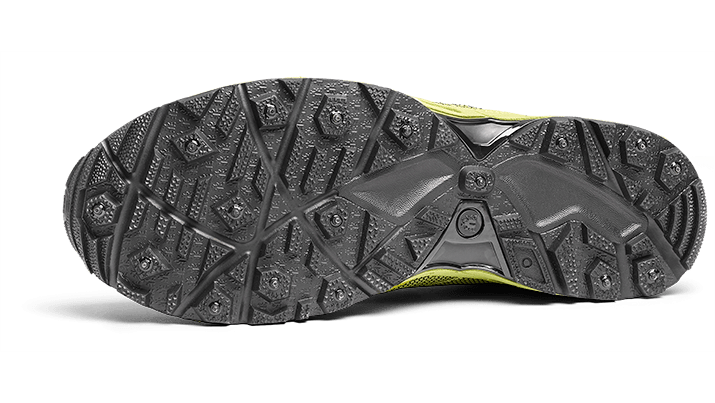
IceBug Dynamic Studs: Think microspikes, but integrated into the sole of a shoe. Each sole wears 15 to 19 of the carbide studs (meaning they retain good functionality even if you lose a few over time) and each rests on a softer rubber compound than the sole around it, enabling them to retract into the sole and putting the main sole in contact with the ground on firm surfaces. Iceberg offers a range of running shoes and hiking boots with integrated studs and also a “BugWeb” add-on that fits into specific grooves on stud-less Icebug shoes, achieving a much higher level of integration than microspikes; you run on the sole and spikes with BugWeb versus just the microspikes of other designs.
Advantages: First, Icebug simply delivers a great shoe or boot that’s very light and designed from the ground up to facilitate athletic footwork. The Speed BUGrip hiking boot we tested weigh just 590g per boots (in size 10.5) and feature a heavily curved-up sole under the toe, allowing you to swing your foot forwards over varied terrain without catching the spikes on it. They’re waterproof, insulated hiking boots with heavily lugged soles, yet feel like you’re wearing running shoes. By retracting into the sole and putting the rubber in contact with the ground, the also allow you to transfer seamlessly from slick ice to concrete without breaking your stride or stopping to switch shoes or remove anything. In fact, they grip equally well on both surfaces so you simply get secure footing no matter where you’re walking or running. Icebug trail runners also include spikes in the arch, providing grip over obstacles like slick logs. All that is making these popular in the obstacle course racing world. The best grip of anything mentioned here short of the crampons.
Disadvantages. Transition from snow or ice to a hard surface and these things are LOUD. I wore them through the lobby of a fancy hotel, drawing disapproving glares from the staff who knew I was damaged their wood floors with every step. You can actually hear the spikes tearing at the floor even if they’re pushed up into the soled. IceBug offers a rubber over-sole to counteract this but, even though they pack down small, that’s still asking you to carry something extra. Also, I hate to say it, but their designs are straight up ugly. Tacky colours, a garish logo and silly designs to not a classy item of footwear make. That’s a shame, because otherwise these shoes and boots are going to transform winter footwear. Just take them off before you walk on any glass surfaces, the carbide tips are basically like wearing 15 little glass breakers.
Picture: Several Seconds
